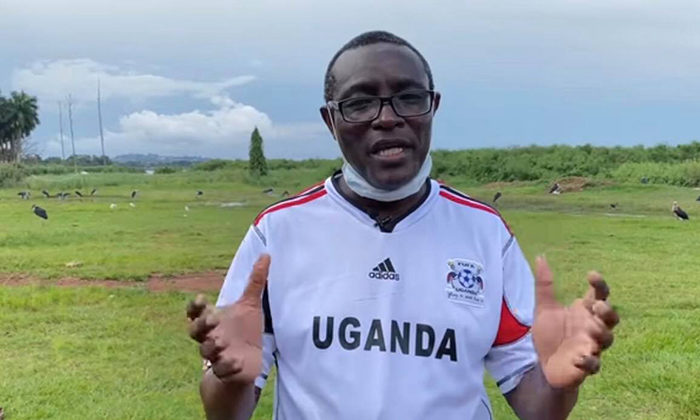
Pastor Peter Kasirivu visits areas in Gaba deeply affected by floods, as a result of rise in water levels at Lake Victoria. Commercial establishments have been submerged, crops destroyed and entire homesteads taken over by the lake’s waters.
The leadership of Gaba Community Church has stepped up to help those negatively impacted by the rise in the level of Lake Victoria.
On Monday, Pastor Peter Kasirivi stated that about 4000 people live in places close to the lake’s shoreline at Gaba. Of these, the Pastor revealed that 2500 have already been displaced by the rising water levels.
“They do not have a place to stay at this time because their homes are flooded,” he said.
According to a survey conducted by East African Community’s Lake Victoria Basin Commission (LVBC), prolonged rainfall has caused a drastic rise in Lake Victoria’s water levels by more than two metres.
Authorities say all the pathways to most markets and fishing villages are heavily flooded with high volumes of water that stretch for about four kilometres towards the mainland.


“The Gaba market is already flooded with water. We have some entertaining beaches, they are under water. As if that is not enough, we have people that are so vulnerable, there is a big slum, we call it Katogo – great people, wonderful people – these are the people that we have been serving for very many years. Many of the women whose children we take care of in our child care center live there,” Pastor Peter Kasirivu said.
Much as the Church attended to the crisis caused by the Covid-19 outbreak by feeding close to 2000 people, its attention has now been drawn to the homeless affected by the rising water levels
Pastor Kasirivu has embarked on ensuring that the vulnerable receive safe water and have access to toilet facilities.
Due to the flooding, many resorted to using toilets owned by authorities in the area. Gaba Community Church is set to re-empty most of these facilities.
“There is about 4000 people who leave in this area. Of these, 2500 do not have a place to stay at this time because their homes are flooded. I would like you to pray that first of all the water will recede,” Pr Kasirivu said.
“We are told that this water will take two years to go back to its former level. We have never had this experience. We have been told that the lake level was at this level in 1964. Pray for the wisdom of the chiefs. We asked one of them; what are you going to do? He told us he is having a lot of trouble,” Pr Kasirivu said.

“I thank God for one thing, these people are alive. None of them has been found to be infected with COVID-19. So, we have a lot to thank God for, but we also have a lot to pray for,” he added.
Lake Victoria flows directly into the reservoir of the Owens Falls Dam, which has a hydroelectric generating station capable of producing 180 MW. Currently, the dam overflows, as does the lake.
Reports how that the only option chosen by Eskom Uganda, the dam operator, is to open the gates to facilitate the evacuation of the water.
“We allowed 2,000 cubic metres of water per second to be released per second compared to the previous 1,000 in February so that the water level would not cause problems at the dam,” explained Callist Tindimugaya, a Water Resources Specialist that has been working with the Ministry of Water and Environment for close to 30 years.
“We have a number of floating islands that have moved because of the rising water level. The water coming in at high speed from rivers like the Kagera makes the land float and the wind pushes it towards the only outlet that the dam (spillway) represents,” he added, according to sources.
The Uganda National Metrological Authority-UNMA in their statement last month projected that the country will receive beyond normal rains that will run-up to June.

